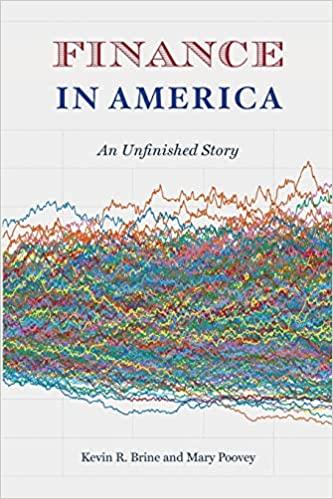Question
56) Bretton Woods required less in the way of cooperation among countries than did the gold standard. 56) ______ A) True B) False 57) In
56) Bretton Woods required less in the way of cooperation among countries than did the gold standard. 56) ______ A) True B) False 57) In the decade since 2000, the U.S. has experienced its largest bilateral trade deficits with the countries of China and Japan. 57) ______ A) True B) False 58) According to the authors, what is the single most important mandate of the European Central Bank? 58) ______ A) Promote price stability within the European Union. B) Promote international trade for countries within the European Union. C) Establish an EMU trade surplus with the United States. D) Price, in euros, all products for sale in the European Union. 59) Which of the following is a way in which the euro affects markets? 59) ______ A) Currency risks and costs related to exchange rate uncertainty are reduced. B) Consumers and business enjoy price transparency and increased price-based competition. C) Countries within the Euro zone enjoy cheaper transaction costs. D) all of the above 60) For the three years from early 2002 to early 2005, the euro maintained a strong and steady rise in value against the U.S. dollar (USD). Which of the following were NOT a contributing factor in the assent of the euro and the decline in the dollar? 60) ______ A) A general weakening of the dollar after the attacks of September 11, 2001. B) Severe U.S. balance of payments deficits. C) Large U.S. balance of payment surpluses. D) All of the above were contributing factors. 61) In January 2002, the Argentine Peso changed in value from Peso1.00/$ to Peso1.40/$, thus, the Argentine Peso ________ against the U.S. dollar. 61) ______ A) remained neutral B) strengthened C) weakened D) all of the above 62) In January 2000 Ecuador officially replaced its national currency, the Ecuadorian sucre, with the U.S. dollar. This practice is known as ________. 62) ______ A) dollarization. B) a Yankee bailout. C) bi-currencyism. D) sucrerization. 63) The United States currently uses a ________ exchange rate regime. 63) ______ A) pegged B) crawling peg C) fixed D) floating 64) Based on the premise that, other things equal, countries would prefer a fixed exchange rate, which of the following statements is NOT true? 64) ______ A) Fixed exchange rate regimes necessitate that central banks maintain large quantities of international reserves for use in the occasional defense of the fixed rate. B) Fixed rates provide stability in international prices for the conduct of trade. C) Fixed rates are inherently inflationary in that they require the country to follow loose monetary and fiscal policies. D) Stable prices aid in the growth of international trade and lessen exchange rate risks for businesses. 65) Which of the following is NOT an attribute of the "ideal" currency? 65) ______ A) Monetary independence. B) Exchange rate stability. C) Full financial integration. D) All are attributes of an ideal currency. 66) World War I caused the suspension of the gold standard for fixed international exchange rates because the war 66) ______ A) cost too much money. B) used gold as the main ingredient in armament plating. C) lasted too long. D) interrupted the free movement of gold. 67) The post WWII international monetary agreement that was developed in 1944 is known as the ________. 67) ______ A) Yalta Agreement. B) Bretton Woods Agreement. C) League of Nations. D) United Nations. 68) Another name for the International Bank for Reconstruction and Development is ________. 68) ______ A) the World Bank B) the Recon Bank C) the Marshall Plan D) the European Monetary System 69) The International Monetary Fund (IMF) 69) ______ A) in recent years has provided large loans to Russia, South Korea, and Brazil. B) aids countries with balance of payment and exchange rate problems. C) was created as a result of the Bretton Woods Agreement. D) is all of the above. 70) Which of the following led to the eventual demise of the fixed currency exchange rate regime worked out at Bretton Woods? 70) ______ A) Differential rates of inflation across member nations. B) Widely divergent national monetary and fiscal policies among member nations. C) Several unexpected economic shocks to member nations. D) all of the above
Step by Step Solution
There are 3 Steps involved in it
Step: 1

Get Instant Access to Expert-Tailored Solutions
See step-by-step solutions with expert insights and AI powered tools for academic success
Step: 2

Step: 3

Ace Your Homework with AI
Get the answers you need in no time with our AI-driven, step-by-step assistance
Get Started


